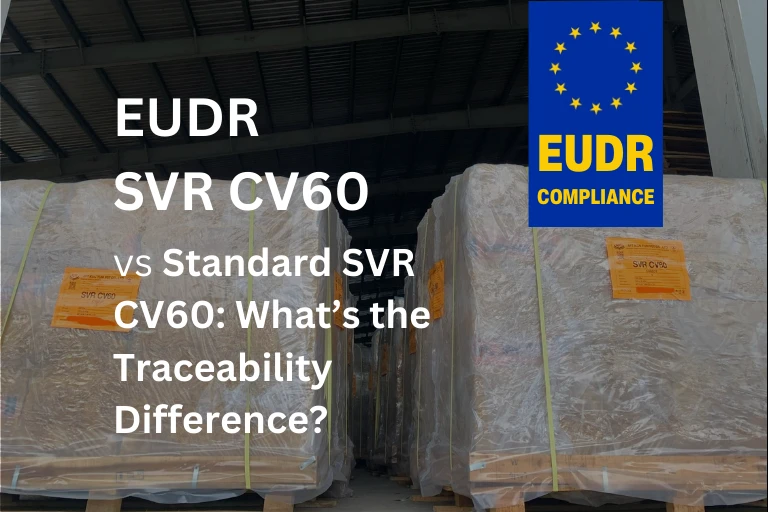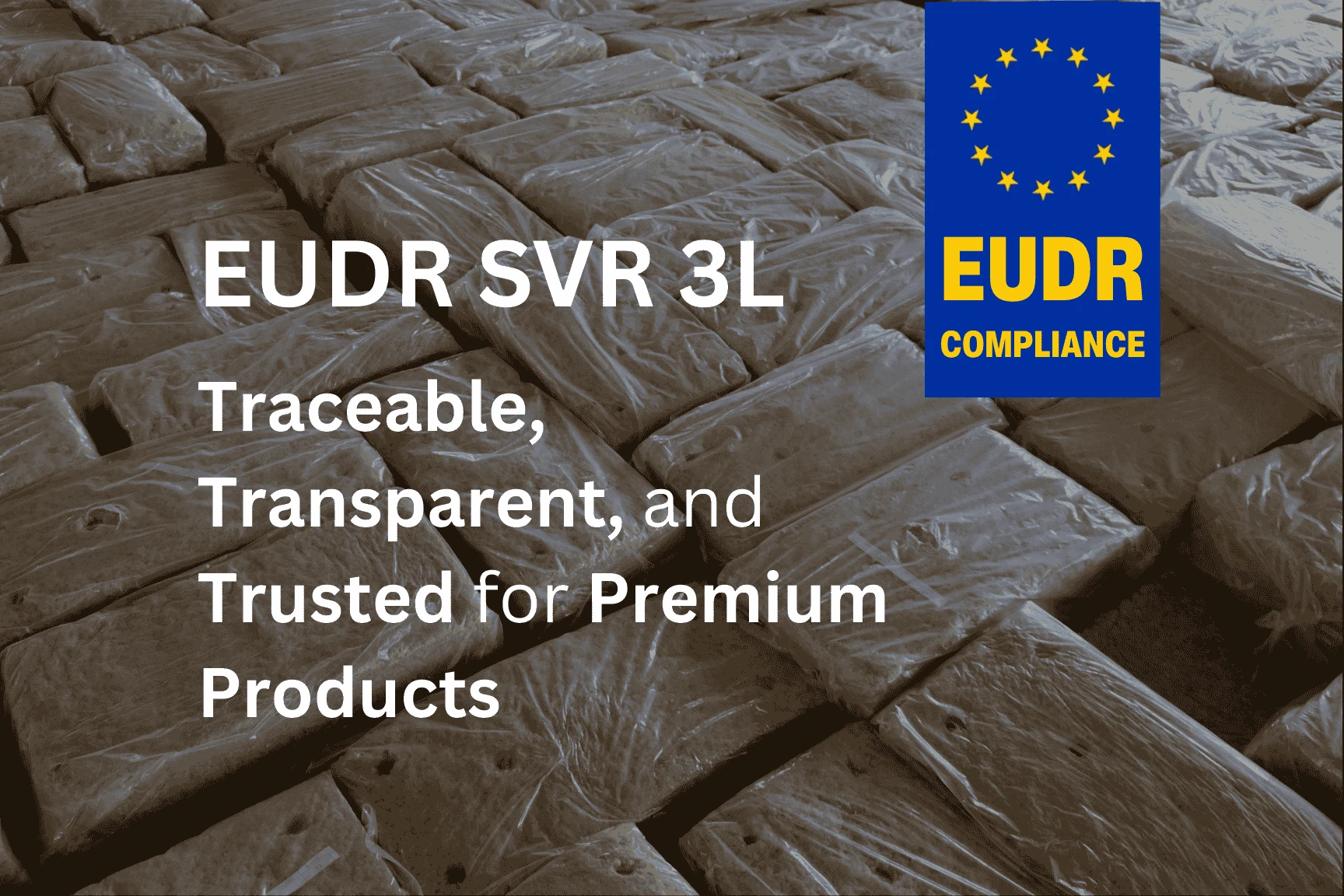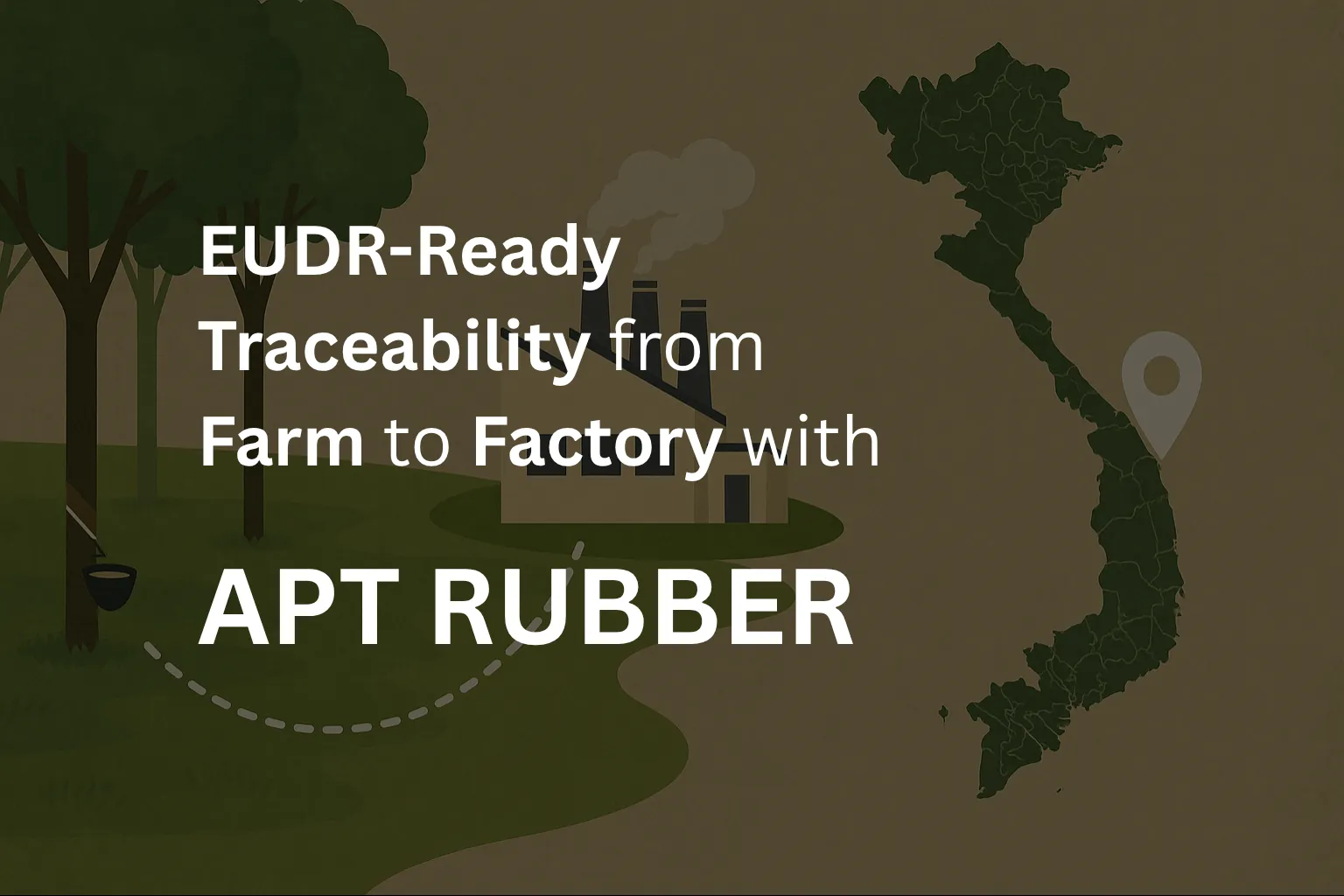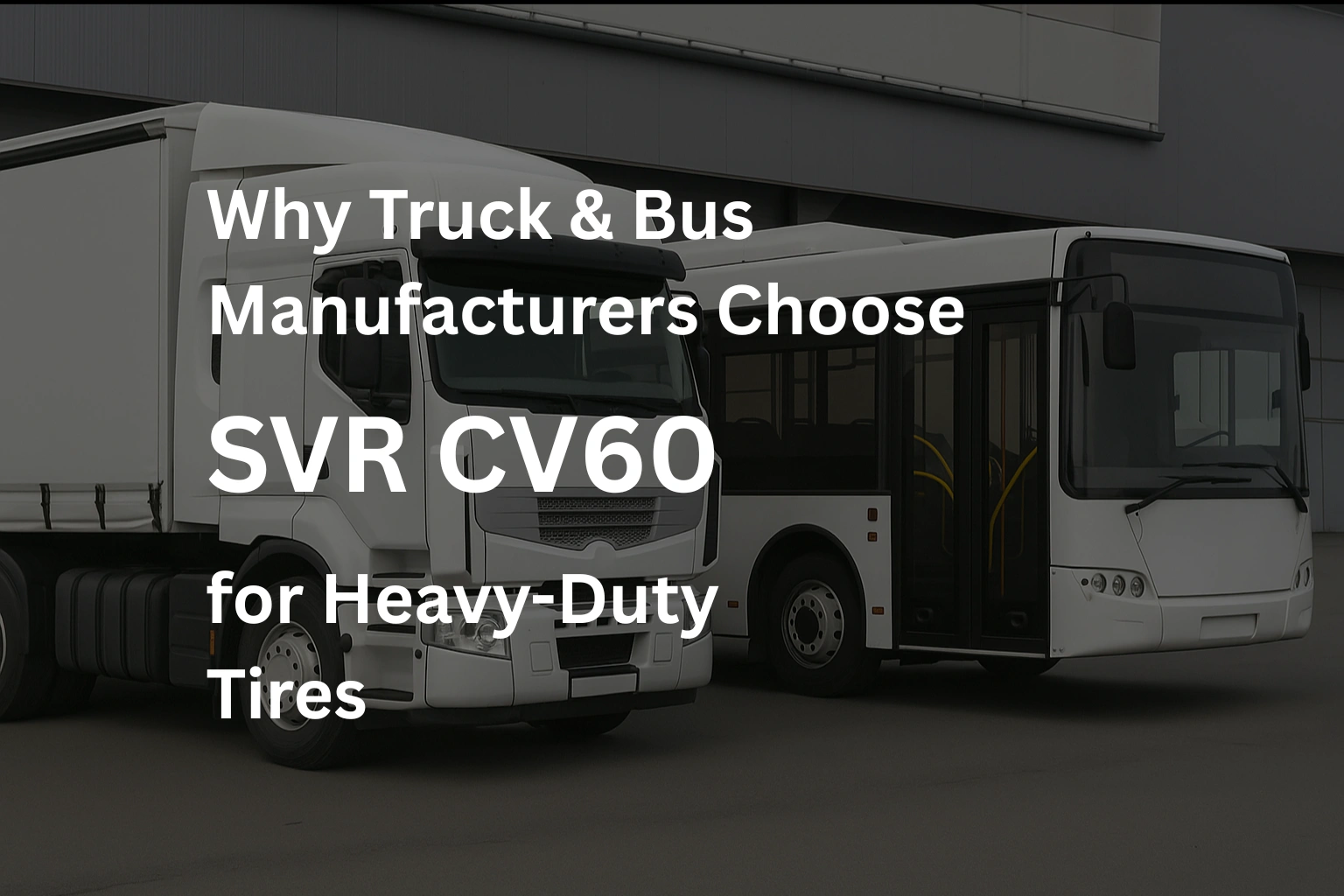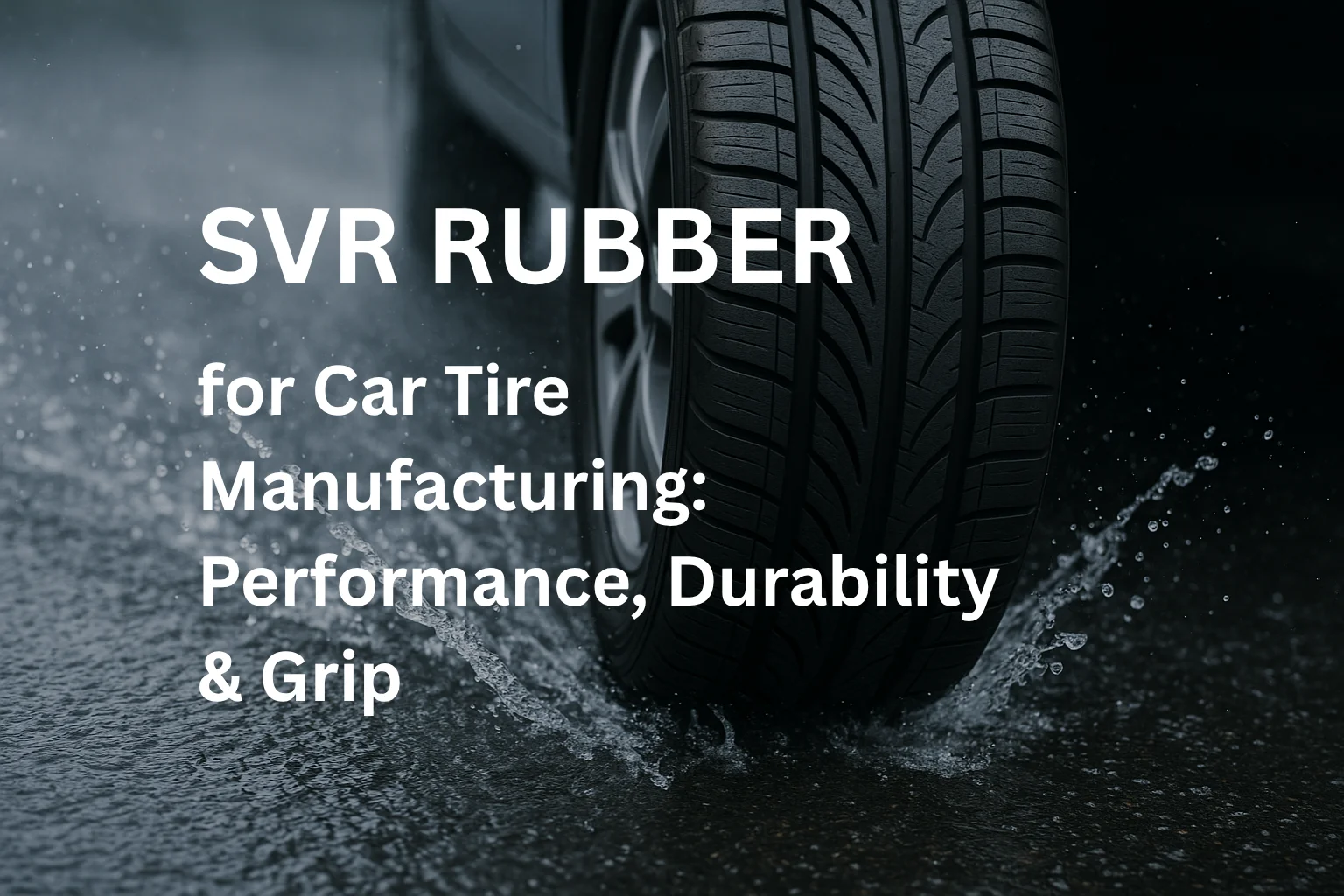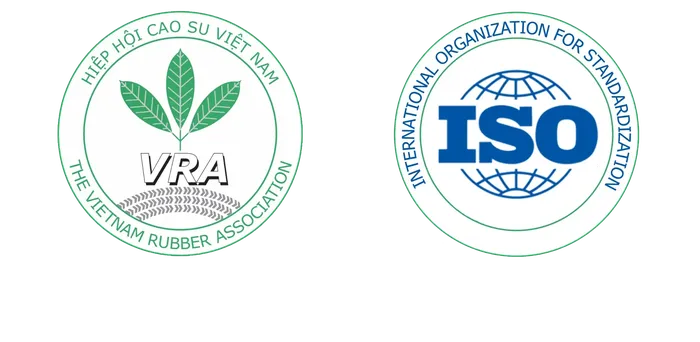
1. 🔍 Defining EUDR and its Significance for Natural Rubber
EUDR stands for the EU Deforestation Regulation (also known as Regulation (EU) 2023/1115).
This regulation aims to ensure that products consumed or placed on the EU market do not lead to deforestation or forest degradation anywhere in the world.
EUDR and Natural Rubber
Natural rubber is one of the seven key commodities regulated by EUDR (alongside palm oil, cattle, coffee, cocoa, timber, and soy, and their derived products).
For natural rubber exporters, EUDR is crucial as it sets new and strict legal requirements for accessing the EU market, a vital destination for rubber products like tires. Non-compliance means being barred from selling goods in the EU.
2. 📅 Effective Date and Scope of Application
EUDR Will Not Be Delayed! (Will EUDR delay again?)
The latest and most current information confirms that the EUDR will not be further delayed. The regulation has entered into force, and the application of obligations is set to begin.
Effective Date for Different Company Types (Effective date of EUDR for different types of companies?)
Compliance obligations for EUDR will start on December 30, 2024, for most companies. However, there is a distinction in the timeline:
- Medium and Large enterprises/ Traders: Application of obligations starts on December 30, 2025.
- Small and Micro-enterprises/ Traders: They are granted extra time, with obligations starting on June 30, 2026.
Who Needs EUDR Compliance? (Who will need EUDR?)
All operators and traders who place EUDR-relevant products (including natural rubber) on the EU market for the first time or export them from the EU must comply.
- Operators: The company that places the product on the EU market for the first time.
- Traders: The company that sells products already placed on the EU market.
3. 🗺️ Traceability and Due-Diligence Requirements
EUDR imposes two primary requirements:
- Legality: The product must be produced in accordance with the laws of the country of production.
- Deforestation-free: The product must not be produced on land that was subject to deforestation or forest degradation after December 31, 2020.
Traceability Requirements
This is the most stringent requirement. Operators must provide the geographical coordinates, specifically the Polygon or Geojson geometry, of all land plots where the rubber was harvested.
This ensures traceability from the final product back to the specific land plot where it was grown.
Mandatory Due-Diligence System (DDS)
Before placing the product on the EU market, operators must implement a three-step due diligence process:
- Information Collection: Gather all necessary information, including description, quantity, country of production, geographical coordinates, and proof of deforestation-free status.
- Risk Assessment: Analyze the risk of non-compliance (e.g., risks related to the country, supplier, or complexity of the supply chain).
- Risk Mitigation: If risks are identified, the company must adopt procedures to mitigate them (e.g., independent surveys, field audits, obtaining additional documentation).
4. 🗂️ Responsibilities and Necessary Documentation in the Supply Chain
Responsibilities of Natural Rubber Factories (Natural rubber factories Responsibilities)
Rubber processing factories play a critical role in connecting growers to the market.
- Traceability: They must establish and maintain a system to collect and store geographical coordinates data (Polygon/Geojson) for all incoming raw latex/cuplumps.
- Proof: Provide documentation demonstrating that the rubber was sourced from plots that were not deforested after 31/12/2020 and comply with local laws.
- Due-Diligence System (DDS): Implement an effective internal due diligence procedure.
Responsibilities of Operators and Buyers (Operators/Buyers Responsibilities)
These entities bear the primary legal responsibility.
- Submit Due Diligence Statement (DDS): Must submit a Due Diligence Statement through the EU information system (formerly known as DDR) to the competent authority, declaring that they have carried out the due diligence process and concluded there is no significant risk of non-compliance.
- Supply Chain Control: Ensure the entire supply chain is traceable to the geographical coordinates.
- Risk Mitigation: Implement measures to mitigate any risks found.
Documentation Needed for EUDR Claim Verification (What documentation needed)
Factories/suppliers need to provide the EU operator with the following documents (at minimum):
- Geographical Coordinates (Polygon/Geojson): Detailed data on the location and boundaries of the rubber plots.
- Proof of Deforestation-Free Status: Evidence showing the land plot was not subject to deforestation or forest degradation after 31/12/2020 (e.g., satellite imagery analysis, land maps).
- Proof of Legality: Certificates of legal land use rights, harvesting permits, and compliance with local environmental/social regulations.
5. 📉 Country Risk Classification and the Rubber Market
Classifying EUDR Risk by Country (Classifying EUDR risk by country?)
The European Commission (EC) plans to classify countries or parts of countries into three risk levels: Low-risk, Standard-risk, and High-risk.
- Low-risk: Operators sourcing from these areas will benefit from a simplified due diligence process.
- High-risk: Operators sourcing from these areas will face enhanced control and due diligence measures (e.g., an increased check of 9% of their goods compared to 1% in low-risk areas).
The EC is currently still in the assessment phase and has not yet published the official list of countries under each risk category. Vietnam and other major rubber-exporting nations are closely monitoring this, as the classification will heavily impact the cost and complexity of exports.
Sourcing EUDR Compliant Natural Rubber (Where to buy EUDR natural rubber?)
Currently, “EUDR compliant” rubber is a new concept. EU buyers will look for suppliers/factories that have fully implemented a Due Diligence System (DDS) and can provide accurate Polygon/Geojson data for the rubber plots.
You can source from:
- Large rubber corporations that have already invested in traceability systems.
- Processing factories that are certified (e.g., through other sustainability standards like FSC, PEFC, or industry-developed schemes designed to meet EUDR).
🎬 Conclusion
EUDR represents a paradigm shift, turning geographical traceability into a mandatory legal requirement. For the natural rubber industry, particularly Vietnamese exporters, the swift implementation of geographical coordinate collection systems and the Due Diligence System (DDS) is a vital factor for maintaining market access to the EU after December 30, 2025.
Forward-thinking enterprises have recognized this importance early on. A prime example is APT Rubber, which has proactively implemented the necessary steps and announced the application/deployment of the EUDR certificate within its supply chain. This action not only secures APT Rubber’s competitive position but also sets a new standard for compliance and transparency within the Vietnamese rubber industry.
Investing in traceability technology is not just a compliance cost; it is an opportunity to solidify international customer trust and enhance the sustainable value of Vietnamese rubber on the global stage.

